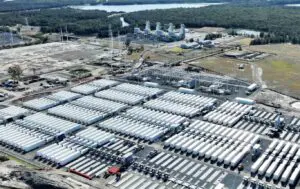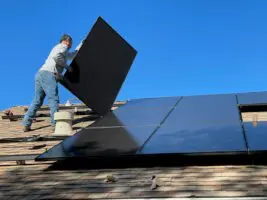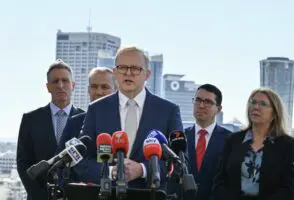Three US states – Wisconsin, Minnesota, and Illinois – have all made moves in the opening days of March to move to decarbonise their state’s electricity supply and transition to 100% renewable energy, highlighting the importance of clean energy in 2018’s elections and the recent introduction of the Democrats’ Green New Deal.
In last year’s US election cycle, Democrats across the country running for various elected offices almost universally felt comfortable running a campaign which included selling the benefits of renewable energy to voters.
Among two of the newly-elected State Governors were Wisconsin’s Tony Evers and Minnesota’s Tim Walz, and in the space of a few days both announced plans to decarbonise their state’s electricity supply.
Wisconsin’s Tony Evers announced at the beginning of the month a proposal that will require the state’s utilities to be carbon-free by 2050 – a move which would push all utilities beyond their existing self-imposed targets.
Evers’ plan for carbon-free electricity would include the use of nuclear energy – with the state already securing 15% of its electricity from the Point Beach Nuclear Plant.
Wisconsin’s plan will require a lot of work, as the state currently gets approximately 55% of its electricity from coal and around 20% from natural gas. Renewable energy only provides around 9% of the state’s electricity.
Illinois, on the other hand, is looking to beat all-comers and become the first mainland state after California to be powered entirely by renewables – not just “clean” electricity (such as nuclear).
Senator Cristina Castro and Representative Ann Williams introduced the Clean Energy Jobs Act to their respective houses – backed by 45 Democratic state lawmakers – which calls for Illinois to transition to 100% renewables by 2050.
The new bill specifically calls for state utility procurement plans to include “cost-effective renewable energy resources” which is equal to a minimum percentage of each utility’s load for all retail customers.
The bill calls for the following procurement targets: 25% by June 2025; 45% by June 2030; 90% by June 2045; increasing to at least 100% by June 2050 – which incremental scaling after each delivery target.
Placing Illinois on a path to 100% renewable energy is vital to a clean energy future,” the legislation states.
“To bring this vision to fruition, our energy policy must prioritize a just transition that incentivizes renewable development and other carbon-reducing policies, such as energy efficiency, while ensuring that the benefits and opportunities of a carbon-free future are accessible in economically disadvantaged communities, environmental justice communities, and communities of colour.”
Finally, Minnesota Governor Tim Walz and Lieutenant Governor Peggy Flanagan announced on March 5 their “One Minnesota Path to Clean Energy” plan which sets out a plan to also transition the state’s electricity sector to 100% clean energy by 2050.
“Climate change is an existential threat,” Governor Tim Walz said. “We must take immediate action. If Washington won’t lead, Minnesota will.
“That is why I am proud to announce a set of policy proposals that will lead Minnesota to 100% clean energy in the state’s electricity sector by 2050. These proposals would put us at the forefront of addressing climate change. Minnesota will pioneer the green energy economy—creating jobs while protecting our planet for generations to come.”
“We must take immediate action to protect our planet for future generations,” said Lieutenant Governor Flanagan.
“We need to stop burning fossil fuels because it pollutes our environment, it’s changing our climate for the worse and it’s no longer economical. This plan sets a clear date and destination for Minnesota’s clean energy journey, along with the pathway to get us there. Minnesota should be a state that continues to lead on this, and we know we can.”
These states join Hawaii and California, both of which have already adopted plans to secure 100% of their electricity from renewable energy and decarbonising their power sector by 2045, while New Jersey and New York both implemented plans for 100% clean energy and carbon-free electricity (respectively) by 2050 and 2040 (respectively).
The spread of 100% clean and renewable energy policies being implemented across the United States highlights the growing importance of the issue for voters, and the ensuing action taken by newly-elected policy-makers.
This is particularly the case in the absence of any action being taken by the country’s national leaders – with Republicans in the House, Senate, and White House almost to a one believing that climate change and its attendant issues are a hoax or faulty science.
This has raised the importance of sub-national action being taken by regions, states, and cities.
These state policies are also representative of the growing interest behind the Green New Deal which has been proposed in the US House of Representatives by Alexandria Ocasio-Cortez (D-NY) and in the US Senate by Ed Markey (D-MA).
While still in an early stage of drafting – one which will likely be heavily modified by the time it ever reaches an actual vote – the proposal has nevertheless brought discussion about climate change, clean energy, and their ensuing impacts on social and economic conditions, into the light.
They are also being discussed by all Democratic candidates throwing their hat in the 2020 Presidential ring, and discussed by elected officials and voters all over the country.










